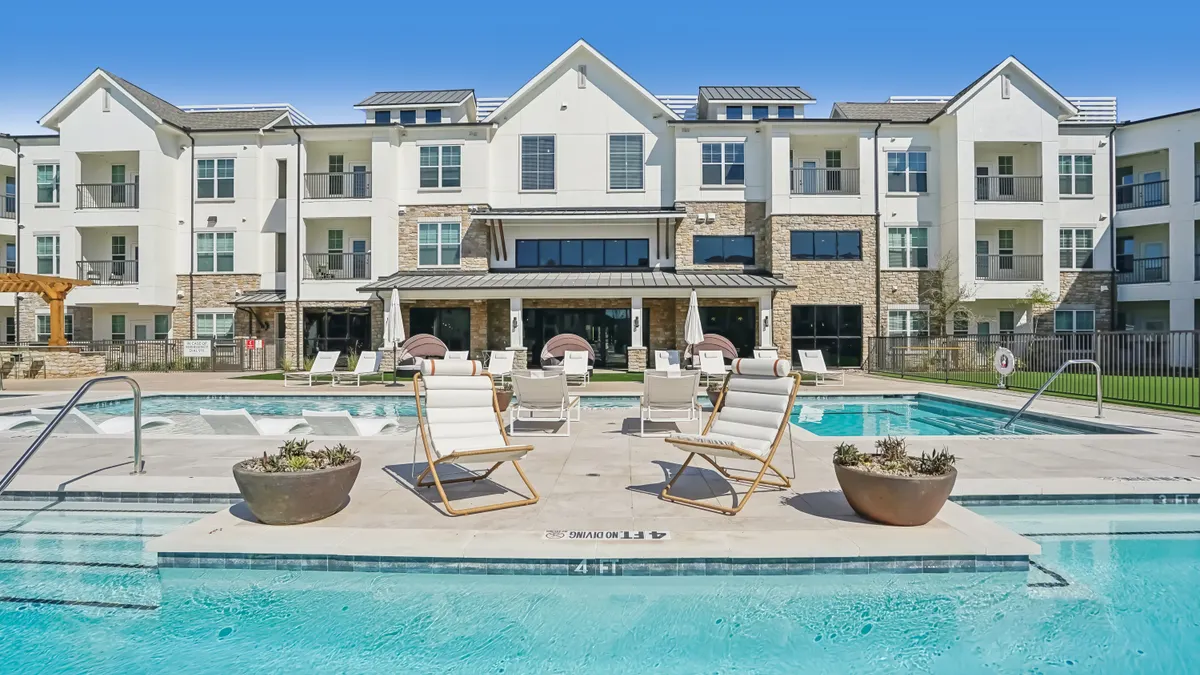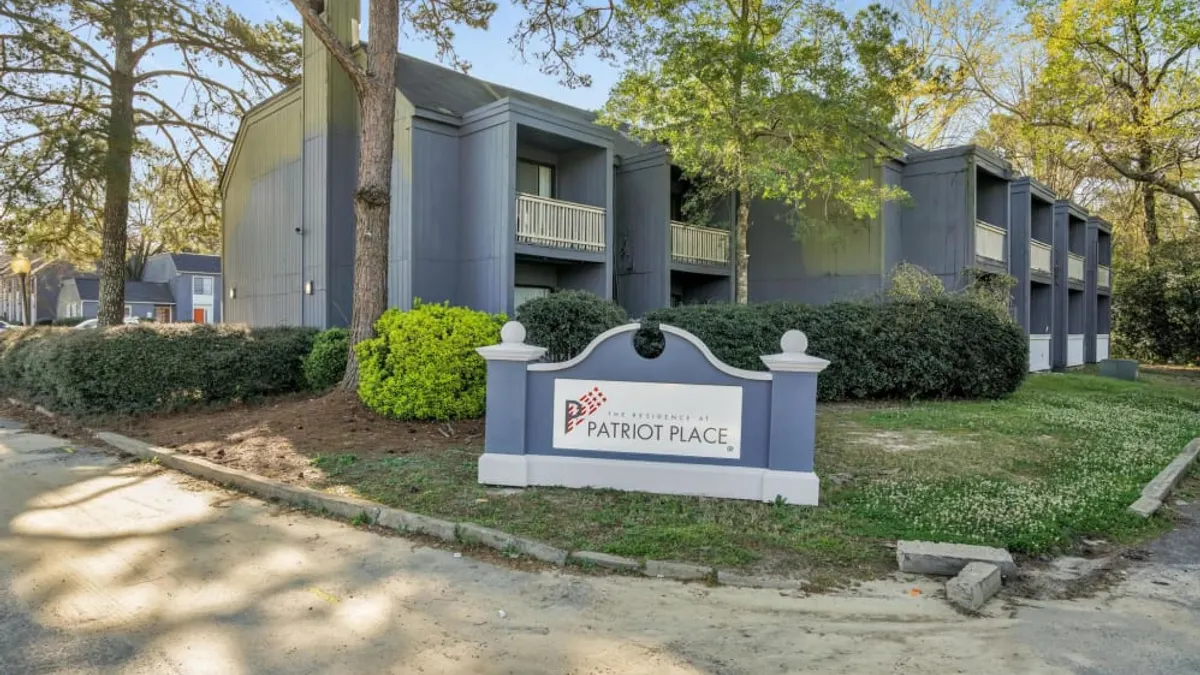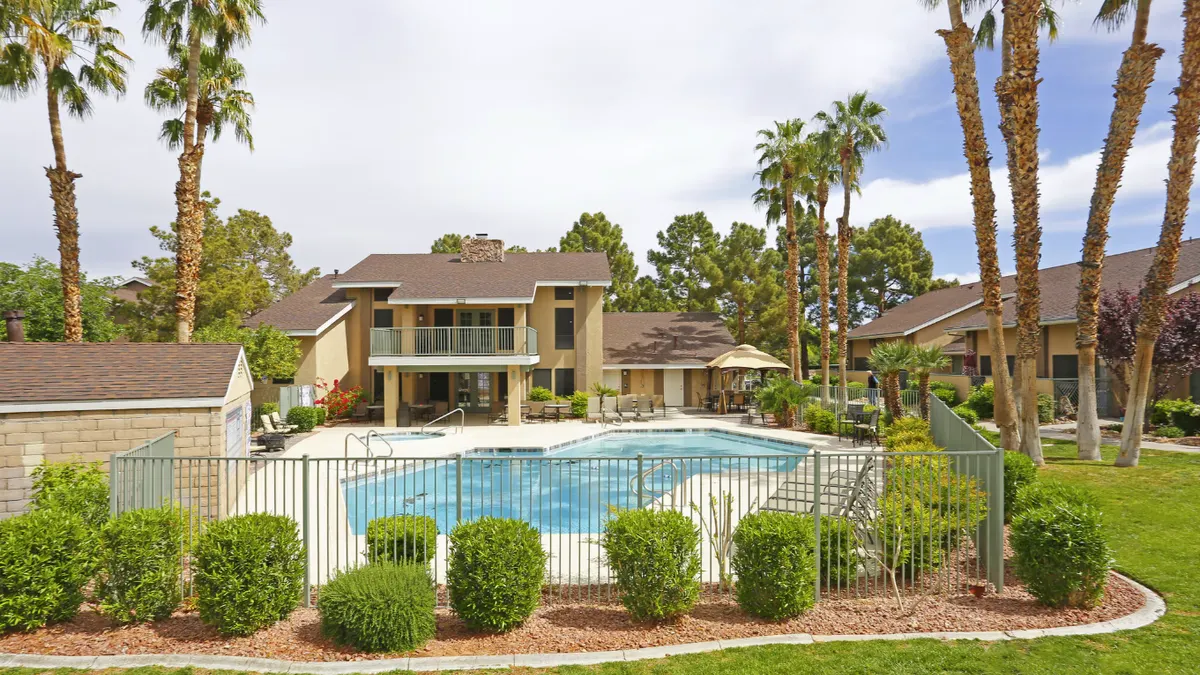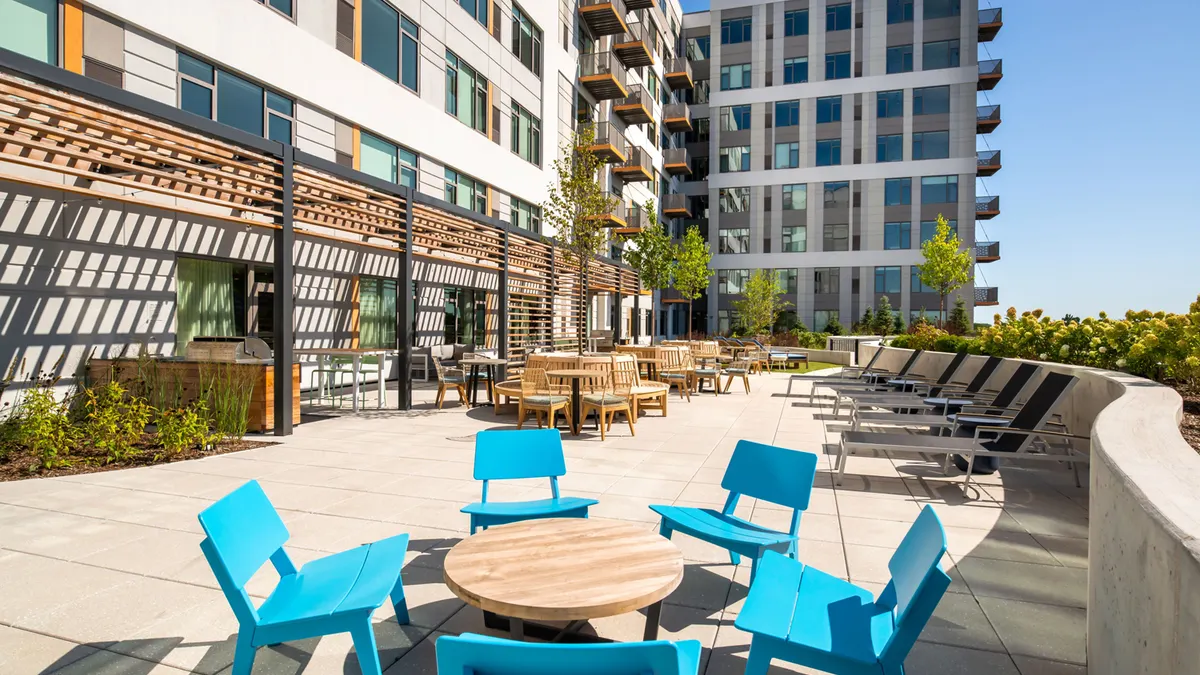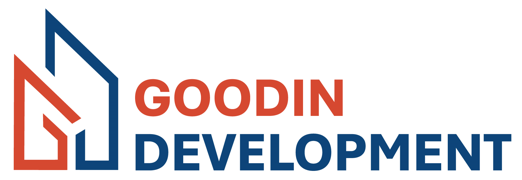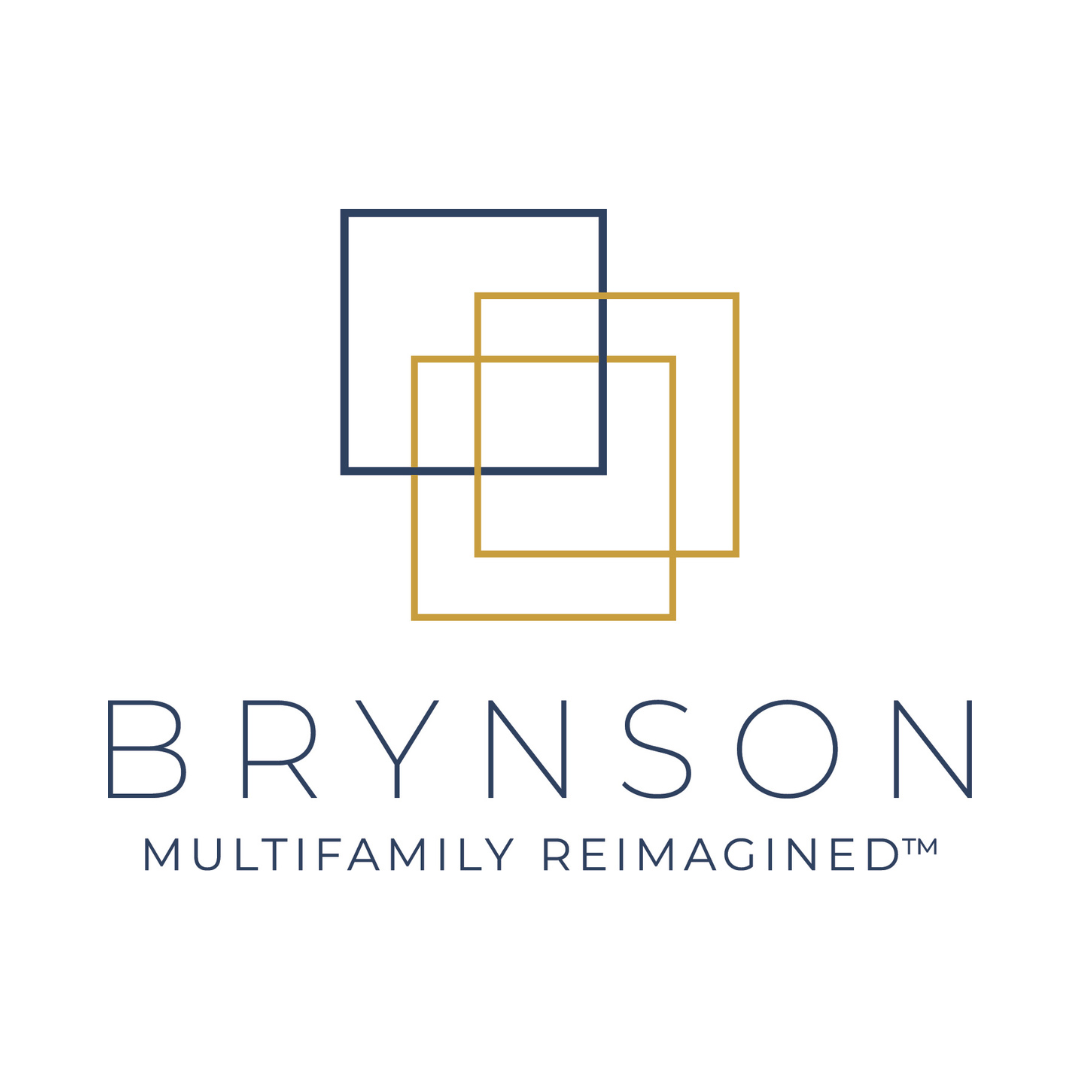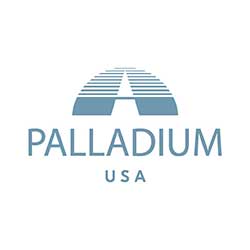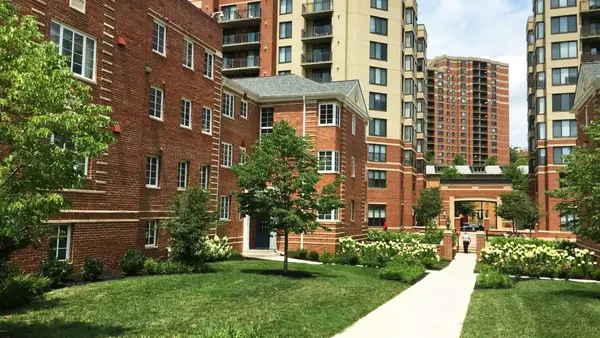April was a milestone month for Valiant Residential.
The Dallas-based property management firm made its first appearance on this year’s National Multifamily Housing Council Top 50 Managers list, debuting at No. 48 with 35,724 units under management.
After being founded in 1987 as SIMC Management, the firm launched third-party services in 2015 and rebranded as Valiant Residential in 2018. Over the past decade, Valiant grew from a single third-party property in 2015 to a multi-state portfolio, spanning Texas, Colorado, Florida, Oklahoma, Tennessee and Arkansas.
“Growth really picked up when we decided to start building a third-party platform,” CEO Craig Lashley told Multifamily Dive.
Valiant, which has a strong presence in Dallas–Fort Worth, Austin, Houston and San Antonio, also ranked among the top 10 Texas-based companies in this year’s NMHC list.
“It wasn't until a couple of years in that we even brought in a client services person,” Lashley said. “We've got a small client services team compared to most of the organizations. But, it's been somewhat word of mouth and more or less organic growth, which is why we have such density in our portfolio in Texas.”
Here, Lashley talks with Multifamily Dive about expansion, mergers and acquisitions and technology.
This interview has been edited for brevity and clarity.
MULTIFAMILY DIVE: As you think about continued growth, is Texas and the broader Sun Belt still your focus?
CRAIG LASHLEY: The fundamental core that our business is focused around is service to our residents and our clients, particularly our residents. And the only way you can really service well is to have a physical presence.
You have a deterioration as you go further away from your base, typically, unless you deploy really great training and systems. The training systems have gotten so much better over the years, and we've leaned in over the last seven years in particular.
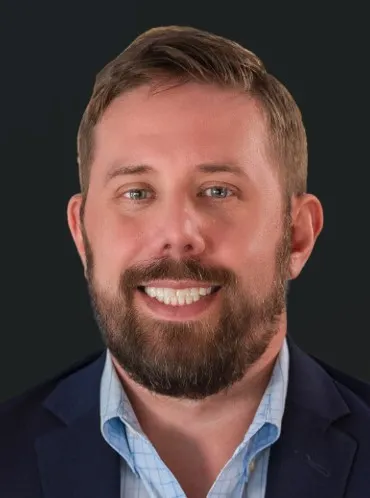
As we continue to look at our expansion pattern, we're looking throughout the Sun Belt. It's got a ton of new deliveries. It's got a lot of population and job growth. The Sun Belt states are attractive right now to a lot of people as they look at where they're going to live and carry through their lives. So, we want to be there to service those folks in those areas, and we also want to be on a healthy growth pattern.
The Top 50 is all about growth and recognition of growth. But we also want to be diligent about our growth so we don't get too fragmented. So, we’re just growing organically from our base in the DFW area, out through the Texas markets, over to Florida and up to Colorado.
We’ve seen a few developers and owners get out of the property management business. Do you expect that trend to continue?
A lot of the NMHC Top 50 owners want to focus on their acquisition business, and property management is continuing to be a more and more challenging business since the pandemic. The labor market is stressed across all industry types, but particularly ours. That level of stress can create some conflicts relative to the capital side of the business, too.
You've seen some acquisitions or mergers, and I would imagine that trend is going to continue because there is also a centralization effort. The industry is also so fragmented. And then you also have the aging out of a lot of leadership teams, which I think has been somewhat to our advantage. We have a relatively youthful team in comparison.
Are you interested in acquiring property management firms, as leaders may hit retirement and want to sell?
I think the focus for our firm goes back toward the quality of service and measured growth, but also just maintaining scale in particular markets. Locationally speaking, the scale is so important to have the flexibility of moving team members between properties while they're on vacation. So that drives a less stressful work environment in a very stressful industry.
The long and short is that I think technology will help build us to a point where the transitions, like the potential for M&A, could be real down the road, just because it'll be easier to integrate. When you look at integrating organically, you're taking one asset at a time, or maybe a group of assets from a particular owner and integrating that management team on-site into your existing operations.
When you look at M&A, you're doing that, plus integrating the corporate-level team. So it gets more and more challenging, but that ultimately helps maintain your quality.
So, as we continue to lean into the technology side and make the transitions a little bit easier and more automated, we can look at how to strategically scale relative to M&A.
How are you incorporating centralization and staffing?
There's still a tremendous amount of value in having the traditional staffing model on the sites for residents, and to captivate those residents who are looking for experiences. Even though there has been technology put in place to create more automation through the leasing process so that there are fewer touchpoints, there's still a tremendous amount of value to a potential resident and an existing resident to interact with a human instead of a system.
We're still running the traditional labor models at the assets. Our average complex size is 250 units. So, typically, we're going to run somewhere between four and six members on a site. So we don't have a lot of properties where it's 100 units or less, where you do have more of a regional-type staffing model.
How have you approached integrating technology?
The approach I've taken is more of a top-down approach relative to technology. I think a lot of the groups out there are looking at the centralization model and saying, “Hey, I'm going to use technology. I'm going to develop technologies to basically make the sites more efficient and effective. Then, I’ll potentially remove tasks or aggregate tasks of the site-level teams to either a system or a corporate-level resource.”
We're using the technology side to build our own kind of proprietary systems off the backs of our core operating platforms to manage data and run our business more efficiently and effectively at a corporate level, which is creating a lot more automation, consistency and workflow for the site teams.
Click here to sign up to receive multifamily and apartment news like this article in your inbox every weekday.


